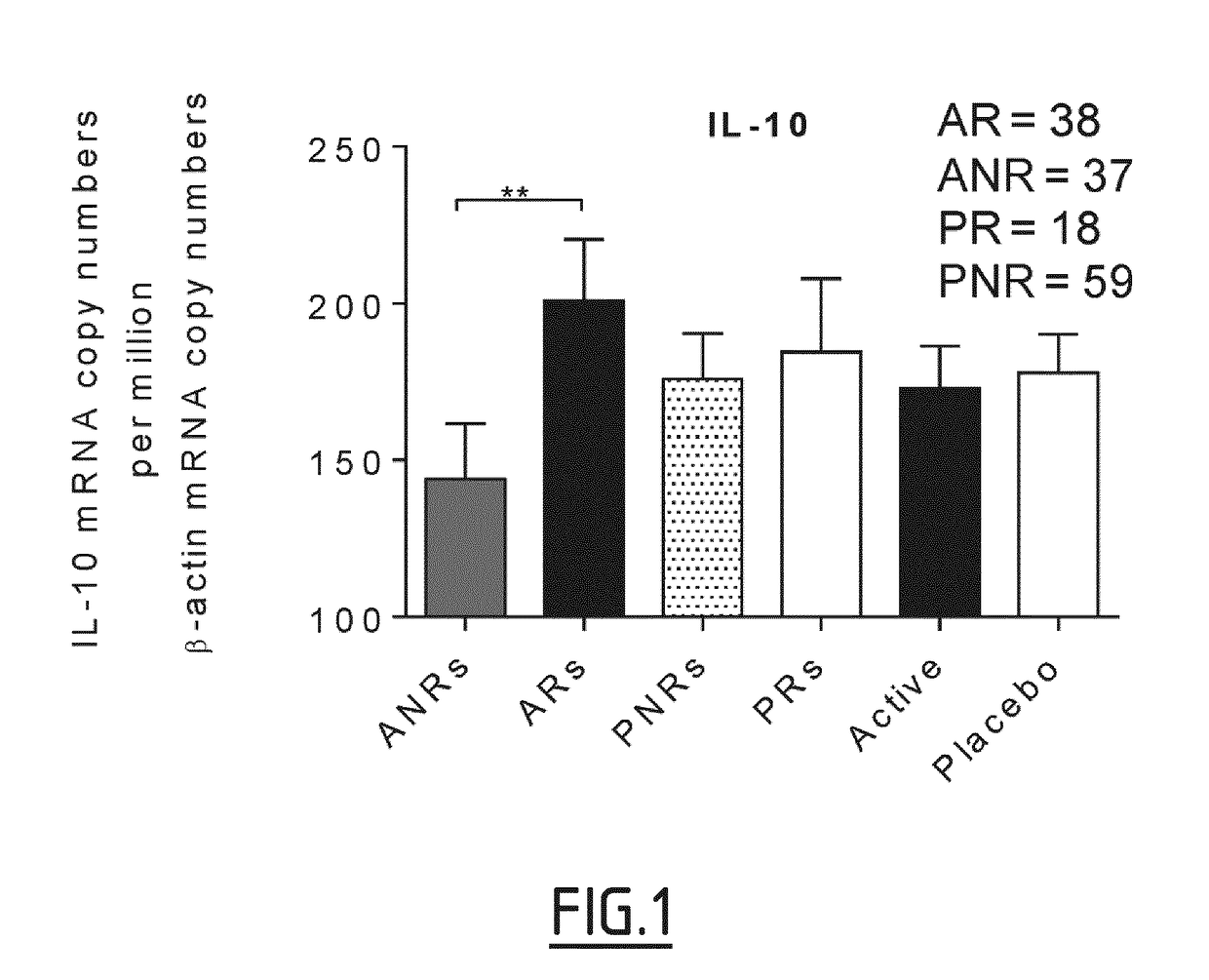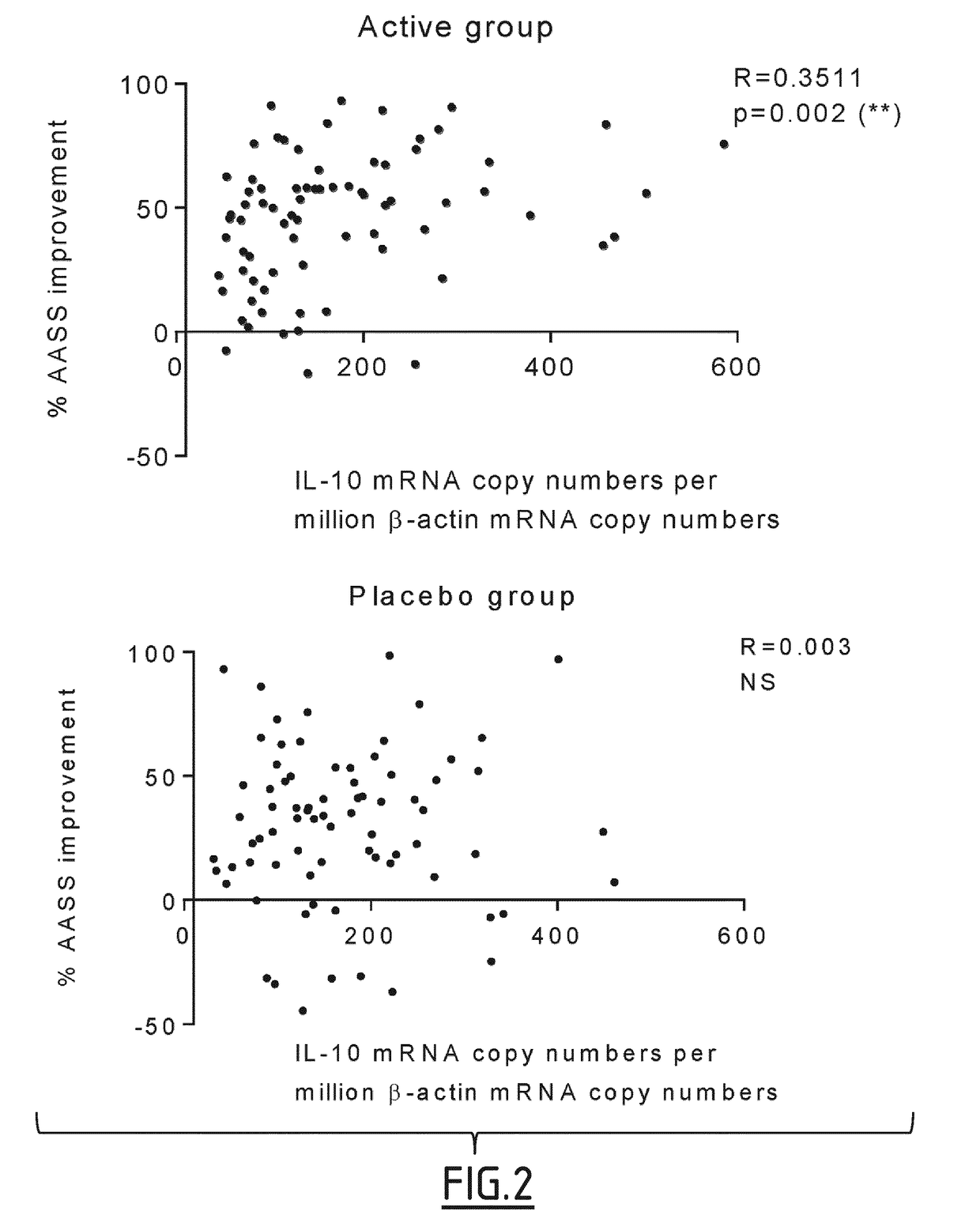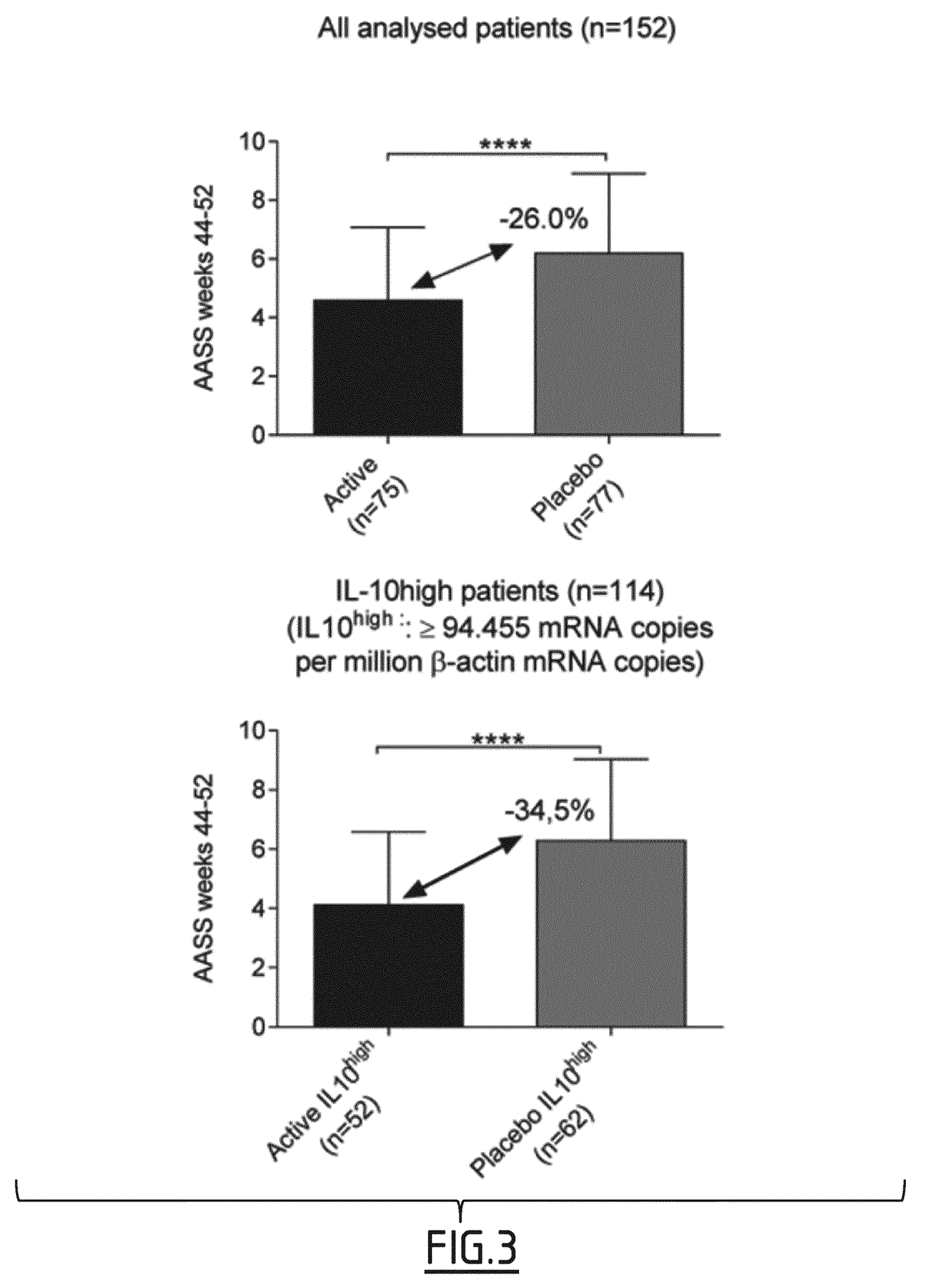Il-10 as a predictive biomarker of responsiveness to house dust mite allergen immunotherapy
a technology of immunotherapy and il-10, which is applied in the direction of allergen ingredients, instruments, biochemistry apparatus and processes, etc., can solve the problems of affecting and the cost of treatment still a major factor in slowing down the uptake of sli
- Summary
- Abstract
- Description
- Claims
- Application Information
AI Technical Summary
Benefits of technology
Problems solved by technology
Method used
Image
Examples
example 1
ign for Evaluation of House Dust Mite SLIT Tablet Efficacy and Safety in a Large Scale One-Year Study in Patients with Allergic Rhinitis
[0106]Clinical Trial Design:
[0107]A randomized, double-blind, placebo-controlled study has been conducted to evaluate the efficacy and safety of house dust mite (HDM) tablet in adolescent and adult patients with HDM allergic rhinitis, with or without intermittent asthma. Subjects were randomized 1:1:1 to placebo or active treatment with HDM extracts at doses (expressed in Index of Reactivity [IR], the in-house standardization unit) of 300 IR or 500 IR and treated for 52 weeks.
[0108]Study Population:
[0109]The full analysis set included 927 subjects, encompassing patients receiving either 300 IR (N=315), 500 IR (N=296) and placebo (N=316) tablets.
[0110]Participants:
[0111]The main inclusion criteria were males or females; ages between 12 and 64 years; a clinical history of HDM-induced allergic rhinitis at least for 2 years; positive HDM-specific serum ...
example 2
ation of IL-10 as a Biomarker of AIT Efficacy
[0119]In the context of the clinical trial described in example 1, ancillary biomarker studies were conducted in HDM allergic patients receiving daily either 300 IR HDM tablets (n=75) or a placebo (n=77). In this study clinical responses were evaluated in each individual patient as percentages of improvement in Average Adjusted Symptom Score (AASS) which adjusts symptom scores for the use of rescue medication.
[0120]Methods
[0121]Patient Subgroups
[0122]The median percentages of AASS improvement in the active group after treatment was also used as a threshold to identify clinical responders, with patients exhibiting a ≥51.18% AASS improvement considered as responders, and those with a lower improvement as non-responders. Based on this threshold, 4 patient subgroups were defined, including active responders (ARs, n=38), active non-responders (ANRs, n=37), placebo responders (PRs, n=18), and placebo non-responders (PNRs, n=59).
[0123]Sample Col...
example 3
n of the IL-10 in Fresh PBMCs
[0142]Expression of IL-10 gene can be assessed in human PBMCs by PCR.
[0143]Total RNAs were isolated from PBMCs using silica-based spin columns. Complementary DNAs were then synthesized using a reverse transcriptase enzyme and random hexamer primers. Quantification was finally carried out by quantitative real-time PCR using the TaqMan technology with primers and probes specific for the IL-10 gene. Relative gene expression was calculated using the ΔΔCt method.
PUM
| Property | Measurement | Unit |
|---|---|---|
| Fraction | aaaaa | aaaaa |
| Fraction | aaaaa | aaaaa |
| Fraction | aaaaa | aaaaa |
Abstract
Description
Claims
Application Information
 Login to View More
Login to View More - R&D
- Intellectual Property
- Life Sciences
- Materials
- Tech Scout
- Unparalleled Data Quality
- Higher Quality Content
- 60% Fewer Hallucinations
Browse by: Latest US Patents, China's latest patents, Technical Efficacy Thesaurus, Application Domain, Technology Topic, Popular Technical Reports.
© 2025 PatSnap. All rights reserved.Legal|Privacy policy|Modern Slavery Act Transparency Statement|Sitemap|About US| Contact US: help@patsnap.com



